Welcome to your comprehensive guide on OSHA compliance! Whether
you're a business owner, manager, or employee, understanding
OSHA standards is crucial for maintaining a safe and healthy
workplace. Dive in to learn everything you need to know about
staying compliant and protecting your workforce..
Introduction to OSHA Compliance
OSHA, or the Occupational Safety and Health Administration, is a key player in ensuring workplace safety. Their primary goal is to make sure that every worker goes home safe and healthy at the end of the day. OSHA does this by setting and enforcing standards, providing training, outreach, and education.
OSHA Compliance Overview
OSHA compliance means adhering to the rules and regulations set by OSHA to maintain a safe working environment. These regulations cover a wide range of workplace hazards and are designed to protect workers from serious harm. Compliance is not just a legal requirement but a moral obligation to ensure the safety and well-being of your employees.
Key OSHA Standards and Regulations
OSHA standards vary by industry, but there are some common regulations that apply to most workplaces. Here are a few key industries and the specific standards they need to follow:
- Construction: Strict fall protection rules to prevent accidents.
- Manufacturing: Machinery safety standards to protect workers from equipment-related injuries.
- Healthcare: Regulations on bloodborne pathogens and patient handling to ensure worker safety.
- Agriculture: Standards for pesticide use and machinery operation to protect farm workers.
- Retail: Ergonomics standards to prevent musculoskeletal disorders
Steps to Achieve OSHA Compliance
Achieving OSHA compliance involves several critical steps. First, conduct a thorough risk assessment to identify potential hazards in your workplace. This assessment should cover all aspects of your operations and involve input from employees.
Once hazards are identified, implement appropriate safety measures. This could include installing safety equipment, developing safety protocols, and providing personal protective equipment (PPE). Regularly update these measures to address new risks and changes in your workplace.
Training is also essential. Ensure all employees are trained on safety practices, how to use safety equipment, and emergency procedures. Regular refresher courses can help keep safety top of mind.

OSHA Training Requirements
Training is a cornerstone of OSHA compliance. Employees need to be aware of the hazards they may encounter and know how to handle them safely. OSHA requires specific training programs depending on the industry and the nature of the job.
Regular training sessions are crucial to keep employees informed about new safety practices and changes in regulations. Interactive and practical training methods can enhance understanding and retention.
OSHA Inspection Process
OSHA inspections can occur at any time, often without prior notice. These inspections aim to ensure compliance with OSHA standards and identify potential hazards. During an inspection, OSHA officials will review safety protocols, inspect equipment, and interview employees.
Preparation is key to handling an OSHA inspection smoothly. Maintain up-to-date records, conduct regular internal audits, and ensure that all employees are familiar with safety procedures.
Common OSHA Violations
Some violations occur more frequently than others. Here are some of the most common OSHA violations:
- Improper machine guarding: Lack of proper guards on machinery can lead to serious injuries.
- Inadequate fall protection: Failing to provide fall protection can result in severe accidents
- Insufficient hazard communication: Not properly informing employees about chemical hazards.
- Lack of PPE: Failing to provide or enforce the use of personal protective equipment.
- Electrical hazards: Improper wiring or lack of electrical safety measures.
- Respiratory protection violations: Not providing or maintaining appropriate respiratory protection.
- Poor recordkeeping: Inaccurate or incomplete records of workplace injuries and illnesses.
To avoid these common pitfalls, regularly review your safety practices. Conduct frequent audits and engage employees in identifying potential safety issues.
Penalties for Non-Compliance
Non-compliance with OSHA standards can have serious consequences. Penalties range from fines to business shutdowns, depending on the severity of the violation. More importantly, non-compliance puts employees at risk, leading to injuries or even fatalities.
Staying compliant not only helps avoid these penalties but also promotes a culture of safety and responsibility within your organization. It shows your commitment to protecting your employees.
Recordkeeping and Reporting Requirements
OSHA requires employers to keep detailed records of all workplace injuries and illnesses. This helps in monitoring and improving workplace safety. Accurate recordkeeping is crucial for identifying trends and implementing preventive measures.
Reporting serious incidents to OSHA is also mandatory. Prompt reporting ensures that appropriate actions can be taken to address the issues and prevent future occurrences.
Resources and Tools for OSHA Compliance
Numerous resources are available to help businesses achieve and maintain OSHA compliance. OSHA’s official website offers guidelines, training materials, and updates on regulations.
Safety management software, like Safetymint, can streamline compliance processes. Safetymint offers features such as hazard identification, incident reporting, and compliance tracking, making it easier to stay on top of OSHA requirements. With its user-friendly interface and robust reporting tools, Safetymint helps you monitor key safety metrics in real time.
Conclusion
OSHA compliance is essential for a safe and healthy workplace. By following OSHA standards, conducting regular training, and maintaining accurate records, you can protect your employees and avoid costly penalties. Utilize available resources and tools to streamline your compliance efforts and ensure ongoing safety in your workplace.
By following these steps and guidelines, you can ensure your workplace remains safe and compliant with OSHA standards. Remember, safety is not just a requirement; it's a commitment to your employees' well-being.
Table of content:
- Introduction to OSHA Compliance
- OSHA Compliance Overview
- Key OSHA Standards and Regulations
- Steps to Achieve OSHA Compliance
- OSHA Training Requirements
- OSHA Inspection Process
- Common OSHA Violations
- Penalties for Non-Compliance
- Recordkeeping and Reporting Requirements
- Resources and Tools for OSHA Compliance
- Conclusion
